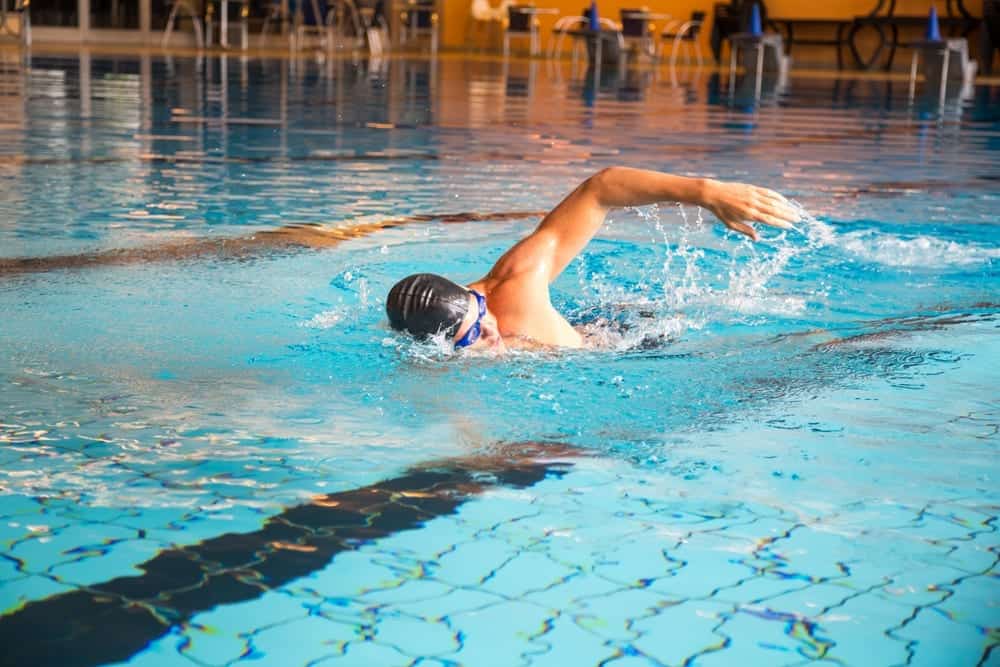Swimming is an incredibly effective way to increase both strength and cardiovascular fitness. But, while many people know how to swim recreationally, getting in the water as a form of exercise is a much more demanding and difficult process. Some endurance events, like triathlons and obstacle races also include a swimming portion. So, how can you get started as a swimmer? Here are five training techniques for beginning swimmers.
- Clean up your breathing. While on land, breathing is a pretty natural thing for most people – you do it just fine all day without thinking about it. But, the same isn’t true for swimmers. The trick is that each time you lift your head out of the water to breath, your hips tend to drop, creating excess drag. This will slow you down and make the entire act of swimming more difficult. To combat this, the first thing you need to do is get comfortable swimming with your face in the water. Once that becomes routine, you can build your breathing routine. While the exact pattern will depend on the stroke you use, it’s usually best to learn with a freestyle stroke while you get comfortable. In freestyle, most swimmers will rely on bilateral breathing – a technique that involves alternating which side you turn to to breath. Essentially, you will inhale on your left side, put your face in the water to exhale and then inhale on the right. Not only will this build a good rhythm, it will force your body to roll slightly from side to side, cutting down on drag.
- Point your fingers down. Many new swimmers slap the water with their lead hand, pushing the water straight down. Not only is this an inefficient use of your efforts but it creates drag will ultimately slow you down. Instead, point your fingers down are they enter the water, pulling the water backwards.
- Get used to your goggles. Professional swimmers spend plenty of time wearing their goggles – and you can expect to as well if you want to make swimming part of your routine. This is especially true if you’re preparing for a triathlon or other even that will have you in the water for long stretches. To prepare yourself, wear your goggles even when you’re not in the water and do not take them off between sets.
- Use fins. The movement and placement of your feet can make a huge difference when it comes to the overall efficiency of your stroke. To refine your technique pick up a set of fins and wear them when you workout. Not only will the fins help to correct any bad kicking habits – like one foot crossing over the other – but they will also increase the flexibility of your ankles.
- Don’t rely on your kicks. While kicking is very important when it comes to keeping your body high in the water to prevent drag, do not rely on your kicks for speed. Especially over long distances, overzealous kicking will wear you out faster and give only a slight boost to your speed – if any. Instead, learn to rely on your upper-body to pull you forward during training. Kicking drills will help you get comfortable with using your feet to stay flat in the water and swimming with a pull bouy will help you build strength in your upper-body.



